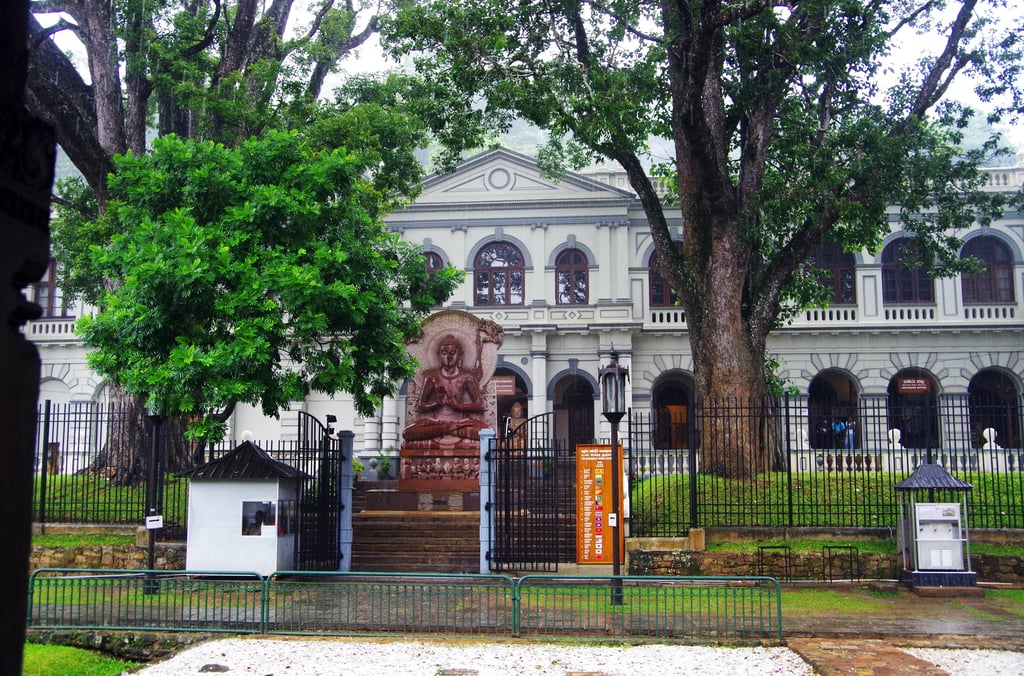Kandy National Museum


Historical Significance
The Kandy National Museum stands as one of the most important cultural institutions in Sri Lanka, offering a detailed look into the heritage of the Kandyan Kingdom. Housed within a section of the former Royal Palace complex, the building itself dates back to the 17th century, having once served as the palace of the queens. It was later converted into a museum to preserve and display the artistic and historical treasures of the era. Each gallery tells part of Kandy’s story—from royal life and traditional craftsmanship to the final years of the kingdom before British rule.
Exhibits and Architectural Beauty
Inside, the museum showcases an impressive collection of over 5,000 artifacts, meticulously curated to represent the grandeur and sophistication of the Kandyan period. Visitors can admire royal garments, weaponry, ceremonial objects, jewelry, and ancient manuscripts, each offering a tangible connection to Sri Lanka’s regal past. The wooden ceilings, arched doorways, and antique display cases complement the historical atmosphere, allowing guests to feel as though they’ve stepped back into the royal court itself.
Cultural Relevance
More than just a repository of artifacts, the Kandy National Museum serves as a bridge between Sri Lanka’s ancient traditions and its present identity. The exhibits highlight the ingenuity of Kandyan artisans—renowned for their metalwork, ivory carvings, and lacquer designs—skills that still influence Sri Lankan art today. Educational displays provide insight into daily life, religious rituals, and the social hierarchy of the time, making the museum a valuable cultural learning experience for both locals and international visitors.
Visiting Tips
The museum is conveniently located beside the Temple of the Tooth, making it easy to include in a walking tour of Kandy’s historical core. Visitors should plan to spend one to two hours exploring the exhibits at a relaxed pace. The museum is open most days, though hours may vary on public holidays. Modest clothing is recommended out of respect for the surrounding sacred areas. Guided tours are available and highly recommended for those interested in the finer details of the Kandyan period’s history and artistry.
Conclusion
A visit to the Kandy National Museum offers more than just a history lesson—it is a journey through the artistry, culture, and legacy of Sri Lanka’s last royal kingdom. Thoughtfully curated and beautifully preserved, it allows visitors to experience the elegance and depth of Kandyan civilization firsthand. For history lovers and cultural travelers, this museum remains an essential stop in understanding the soul of Kandy.


